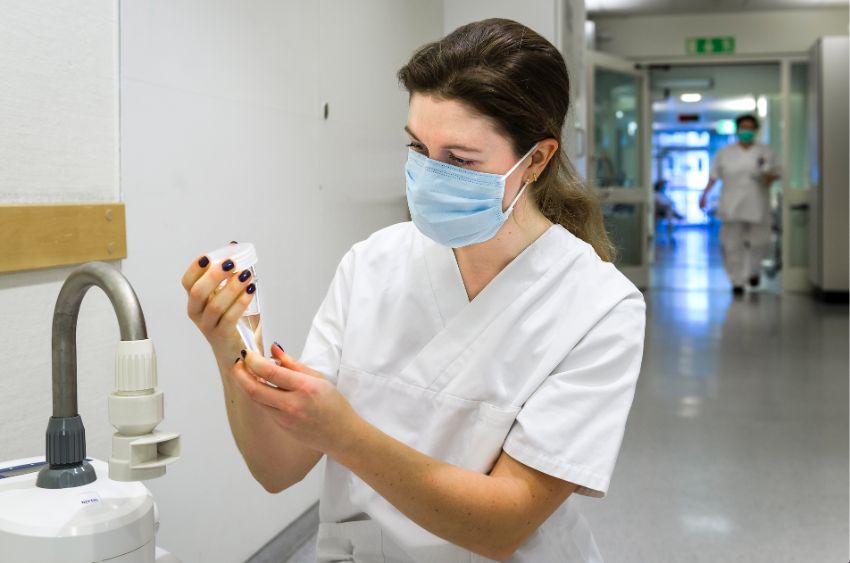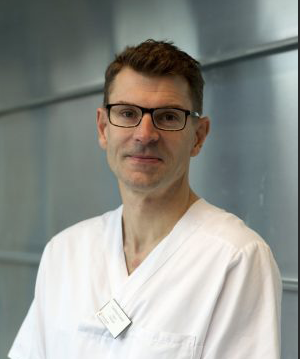New knowledge about airborne virus could help hospitals
The risk of being exposed to Covid-19 particles increases with shorter physical distance to a patient, higher patient viral load and poor ventilation. Measurements taken by researchers at Lund University in Sweden of airborne virus in hospitals provide new knowledge about how best to adapt healthcare to reduce the risk of spread of infection. Researchers hope current international guidelines in healthcare will be changed.
Jonas Andersson – Publicerad den 13 maj 2022

At the beginning of the Covid-19 pandemic, it was believed that infection was primarily spread via large droplets from people with symptoms of disease. Over time, it became clear that people are most infectious at the onset of disease and inhaling airborne virus proved to be an important route of transmission. Most guidelines only included the risk of aerosol infection in certain healthcare situations, for example when respiratory support was provided. Although many of the work methods have been developed over the course of the pandemic, the guidelines used to assess the risk of infection in healthcare have been based on outdated knowledge.
“We have now confirmed what we have learnt during the pandemic, that what affects the risk of spread of infection is how much virus the patient is transmitting, the physical distance to the patient and the quality of the ventilation in the room. However, it does not seem that respiratory support affects the risk of virus in the air. As a result, we hope that the WHO recommendations will be changed and healthcare procedures adapted,” says Carl-Johan Fraenkel, consultant and specialist in infection medicine and infection control at SUS, and researcher at Lund University.
From spring 2020 to spring 2021, researchers at Lund University took many measurements in hospital environments, primarily at different Covid-19 wards at Skåne University Hospital in Lund and Malmö, with the aim to obtain more knowledge about how Covid-19 is spread. The study is the largest of its kind and the results have now been published in the scientific journal Clinical Infectious Diseases.
Measurements of virus in the air were taken in the rooms of intensive care patients as well as in other wards. One important factor in the measurements is that hospitalised patients had generally been infected for one to two weeks before they became so ill that they required care, meaning that their viral load was not as high as that of patients with recent infections.
The measurements were taken with instruments that are custom-made to collect biological substances from the air, and samples were collected from corridors and communal spaces as well as inside patient rooms. In total, 310 samples were collected, of which 231 were collected in patient rooms. In total, eight per cent of all the samples were positive, and the figure for samples taken from patient rooms was ten per cent. The reason for the relatively low number is precisely because the patients had been sick for so long, meaning they were not transmitting as much of the virus into the air.
“We collected many samples in different patient situations and measured how many virus particles there were in the collected air samples. We then linked these to the viral load the patient had in their body, what the ventilation was like inside the room and the distance to the patient,” explains Sara Thuresson, doctoral student in aerosol technology at Lund University.
With these measurements, researchers were able to establish that improved ventilation, both with mobile HEPA-filtration units and with higher installed ventilation rates, clearly reduces the risk of airborne virus.
“We also collected samples from different distances: less than one metre from the patient, one to two metres away and more than two metres away. The risk of infection increases by 50 per cent for each category as you get closer to the patient,” says Sara Thuresson.
It has now been established that Covid-19 is primarily transmitted via fine aerosol particles containing the virus. These can remain in the air for many minutes and spread further than two metres, particularly in poorly ventilated environments. The particles can also get through the gaps in surgical masks or respirators. Despite this, many infection control programmes are based on previous notions about the spread of infection.
As current guidelines have been followed, healthcare staff have primarily used the best personal protective equipment when treating the sickest patients, those on ventilators or receiving other respiratory support.
“However, this patient group seems to be the least infectious, instead, it is the newly infected patients in other wards who are the most infectious, and with whom more basic protective equipment has been used,” says Carl-Johan Fraenkel.
Further research is underway on how significant the risk of infection is in waiting rooms and corridors, where it is more common to find patients or staff without any symptoms but who may also be carrying infectious virus.
“The guidelines that we have been following to assess the risks in healthcare need to be reviewed. There has been a lot of debate about government recommendations both in Sweden and abroad, and I think our study will contribute to the international recommendations being changed. Although the WHO and other infection control organisations have recognised the key role of aerosols in the transmission of SARS-CoV-2, there are still many aspects of the infection control programmes that are based on old traditions,” concludes Carl-Johan Fraenkel.
Full article on the website of Clinical Infectious Diseases
Footnote: the study measured genetic material (RNA) and the number of virus particles, although it is unknown whether the particles were infectious or not. However, it is likely that there is a link between the number of particles and infection.

Carl-Johan Fraenkel
Consultant and specialist in infection medicine and infection control at SUS, and researcher at Lund University
carl-johan.fraenkel@med.lu.se

